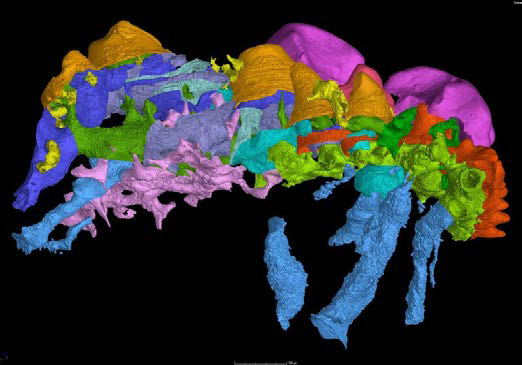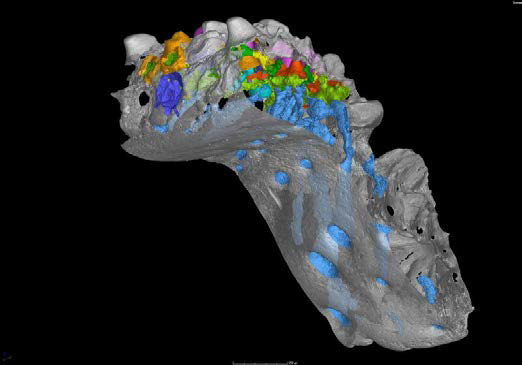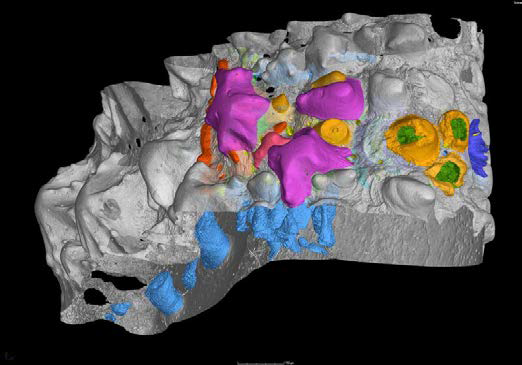Synchrotron scans of Lophosteus jaws. Credit: Donglei Chen
Researchers studying a 400 million year old bony fish from Estonia believe that they have found evidence for the origins of teeth. Using advanced synchrotron microtomography on numerous specimens representing different ages has allowed scientists a rare glimpse into the evolution and formation of teeth. As lead author Donglei Chen explains, "We can watch how fishes initiated and replaced teeth one by one, and how the blood vessels of these teeth were formed, 400 million years ago. It is as if we have traveled through a space-time portal to a living, microscopic world inside the fossil bones." This research will be presented at the 77th Annual Society of Vertebrate Paleontology meeting in Calgary, Canada.
Teeth consist of a soft pulp surrounded by dentine and covered by a mineralized substance such as enamel. Some researchers believe that teeth evolved from dermal scales around the mouth region in primitive fishes called odontodes. But as Donglei Chen states, "To understand the origin of teeth, people have tended to search for dermal odontodes that look like teeth. However, even if the extra-oral 'teeth' have all the features thought to be unique to true teeth, this may only represent convergent evolution based on a flexible developmental tool kit shared by all dermal teeth."
Based on their work of one of the earliest known bony fishes, Lophosteus superbus, from the Late Silurian of Estonia, Uppsala University researchers looked for clues into the origins of teeth. This fish had many skull ornamentations that were similar to earlier groups of fishes called arthrodires. Some of these ornamentations on and around the mouth had a dome-shaped appeared that the researchers referred to as 'tooth cushions'.
Synchrotron scans of Lophosteus jaws. Credit: Donglei Chen
These tooth cushions appear to represent the most primitive form of a tooth battery within the mouth. By using synchrotron microtomography, Chen and his colleagues were able to reconstruct 3D images of specimens of different ages in order to compare the growth history and development of the teeth. Chen adds, "By modelling the successive resorption surfaces in three dimensions it allows us to visualize the entire developmental trajectory of the dentition". As a result, the dental development of Lophosteus may cast light on the possible origin of teeth from dermal odontodes, and on the evolutionary relationship between dentitions of all jawed animals.
Synchrotron scans of Lophosteus jaws. Credit: Donglei Chen
Provided by Society of Vertebrate Paleontology


























